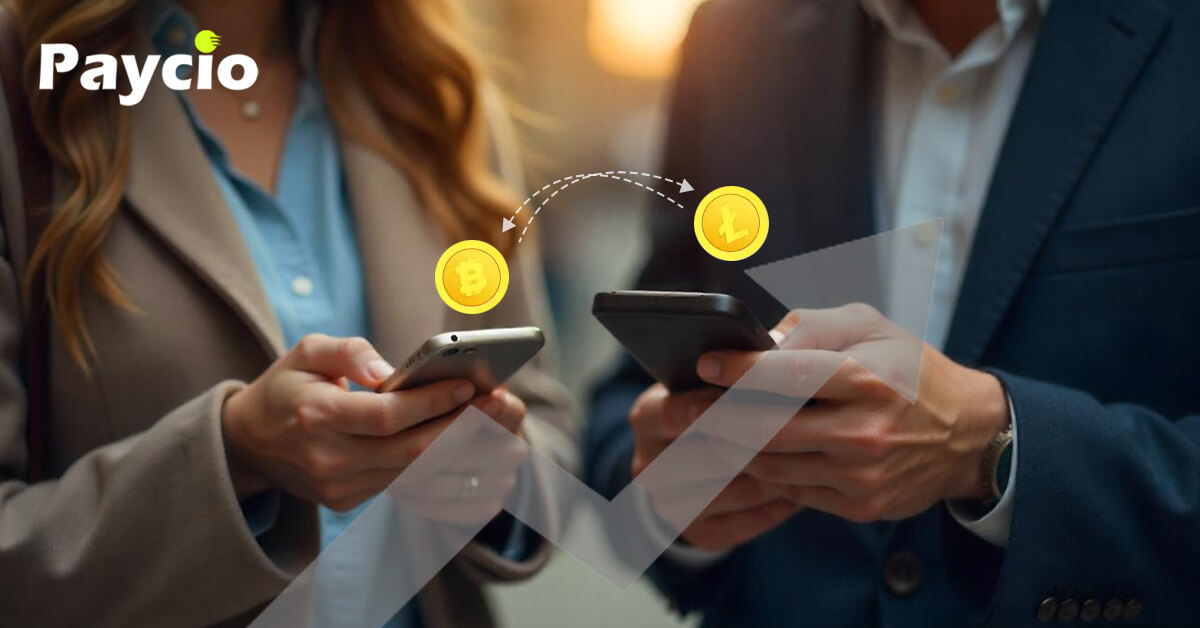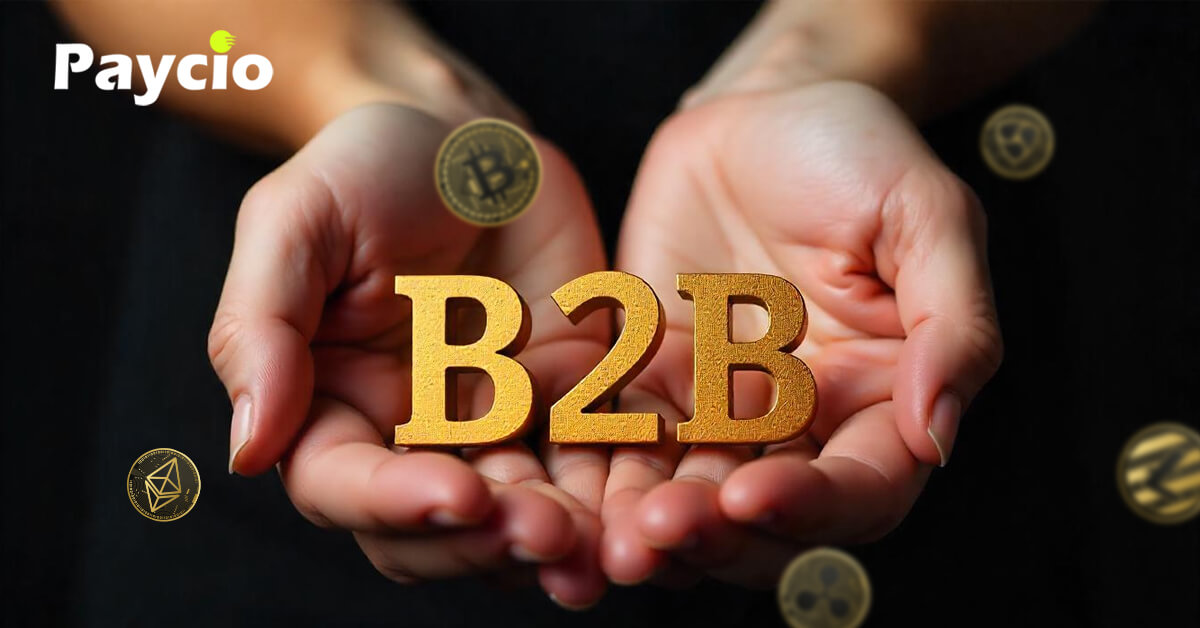
When you think of C2C crypto payments as sending money or making online purchases, you might picture banks, businesses, or big platforms as the main players. But there’s a growing trend where regular people—consumers like you—are directly exchanging money without the need for big institutions or companies in the middle. It’s an exciting space that’s already showing impressive growth.
For example, The Business Research Company reported that the remittance market alone reached $737.05 billion in 2023, with predictions to hit $785.92 billion by 2024. Meanwhile, Polaris Market Research projects that the C2C e-commerce market will grow from $1,670.90 billion in 2023 to a massive $11,216.30 billion by 2032.
These numbers show how much people rely on C2C crypto payments for everything, from sending money to loved ones to buying and selling goods online. But what exactly are C2C crypto payments, and what challenges come with this way of exchanging money? Let’s break it down.
C2C crypto payments, as the name suggests, occur directly between consumers (individuals), bypassing any intermediary institutions like banks or payment providers. These transactions typically use cryptocurrency, and the entire process is facilitated via blockchain technology.
The sender chooses a recipient, often using their wallet address or mobile number linked to their crypto account.
Execution The sender inputs the amount they wish to transfer and confirms the transaction.
The transaction is verified by miners (in proof-of-work systems) or validators (in proof-of-stake systems) and added to the blockchain, ensuring it is secure and tamper-proof.
Once the blockchain confirms the transaction, the recipient can access the funds in their wallet. This decentralized approach eliminates the need for banks or financial institutions, making transactions faster, cheaper, and more accessible, especially for international transfers.
While C2C crypto transactions share similarities with P2P payments, the two terms aren’t interchangeable. Here’s a breakdown of the key differences:
These transactions involve individuals transferring cryptocurrency directly to each other. There are no intermediaries (other than the blockchain) involved. Users typically use wallets, mobile apps, or other digital platforms to send and receive crypto.
This broader term includes not just crypto but any peer-to-peer transaction (such as those made via mobile payment apps like Venmo or PayPal). P2P crypto payments specifically focus on digital currencies, but they may involve a third party, such as a P2P exchange or a payment platform acting as an intermediary.
C2C crypto payments have gained momentum because they’re fast, accessible, and convenient. They allow people to exchange money without waiting days for bank transfers or paying high fees to middlemen. They’re especially useful for:
As more people engage in digital commerce and find alternative ways to manage their finances, C2C payments are becoming a natural solution.
Even with its many benefits, the C2C crypto payment space isn’t without its challenges. Here are some of the main hurdles people face:
One of the biggest risks of digital payments is human error. With C2C crypto payments, users often need to enter long wallet addresses or unique IDs. A single typo can send money to the wrong person, and recovering funds in these cases is nearly impossible.
Although many C2C crypto payment platforms aim to cut costs, users often encounter high fees—especially in cryptocurrency transactions. For example, gas fees on networks like Ethereum can become costly during busy periods, making smaller transactions impractical.
C2C crypto payments rely heavily on digital platforms and wallets, which can be targeted by hackers or scammers. Phishing attacks, fake wallets, and fraudulent websites make it difficult for users to feel completely secure.
While C2C crypto payments are ideal for sending money internationally, they can be impacted by differences in regulations, exchange rates, and network delays. For example, transferring funds in one cryptocurrency may not be as simple as exchanging fiat currencies.
The growing number of cryptocurrencies and digital payment methods creates confusion for users. Switching between wallets, networks, and tokens can be overwhelming, especially for those new to digital payments.
Despite users' challenges in the C2C payment space, platforms like Paycio are transforming how people send and receive money. Paycio is a crypto payments super app that simplifies transactions by allowing users to send cryptocurrency directly to the recipient’s mobile number, making it as fast and effortless as sending a text.
With the innovative Unified Crypto Payment Interface (UCPI), Paycio ensures that sending, receiving funds, or even shopping is quick, secure, and user-friendly. What’s more, Paycio offers the ability to process transactions even offline—an invaluable feature for users in regions with limited connectivity.
Its standout capability—crypto transfers via phone numbers—has gained significant recognition globally for its intuitive design and advanced functionality, providing unmatched convenience for cross-border blockchain payments.
Forget the hassle of memorizing long wallet addresses or worrying about errors. With Paycio, users can send crypto directly to a recipient’s mobile number. This innovative feature makes crypto transactions simple and accessible, even for beginners.
Paycio takes convenience further by enabling QR code-based payments. Whether you’re paying a friend, splitting bills, or shopping, all you need to do is scan the recipient’s QR code to complete the transaction—fast, easy, and accurate.
High gas fees are a common barrier in cryptocurrency payments, but Paycio offers a solution by optimizing blockchain routes and providing alternative gas fee options. This ensures users pay lower fees, making small and frequent transactions more affordable.
One of Paycio’s groundbreaking features is the ability to process offline payments. This is a game-changer for users in areas with limited internet access, allowing them to complete transactions anytime, anywhere, without needing a stable connection.
Paycio’s UCPI system adds an extra layer of security to every transaction. This feature helps protect users from fraud and phishing attacks by linking payments to a verified and unique ID, ensuring funds are always sent to the correct recipient.

The rise of C2C crypto payments is changing how people think about money and transactions. It’s making payments faster, more flexible, and less reliant on traditional systems. But for this space to reach its full potential, challenges like security, fees, and accessibility need to be addressed.
That’s where platforms like Paycio come in. By focusing on user-friendly features like mobile number payments, QR codes, and offline capabilities, Paycio is making it easier for people to embrace C2C payments.
Whether you’re sending money to a friend or buying a product online, Paycio offers a safer, smarter way to make it happen. If you’re curious about how C2C crypto payments can work for you, now is the perfect time to explore what they offer. And with Paycio, getting started has never been easier.

Learn about B2B crypto payments, including benefits and access to new markets. See how Paycio addresses difficulties & simplifies payments.






